
| Hiking the Northern Albanian Alps |
Getting There - Shkoder to Valbona |
|
|
|
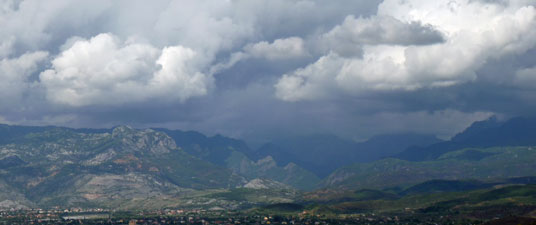 Storm clouds over the Accursed Mountains |
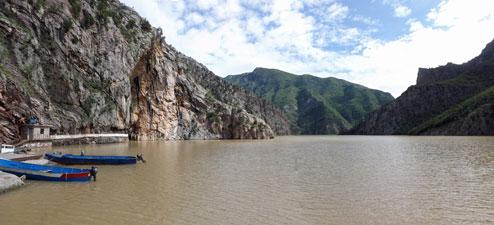 Starting point for our ferry trip at the Koman Reservoir |
 Leaving the dam wall behind to head up Lake Koman |
|
|
|
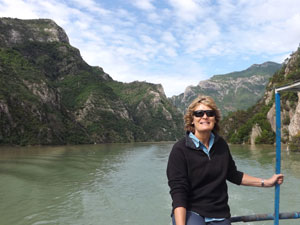 The fair Nello, with the wind in her hair |
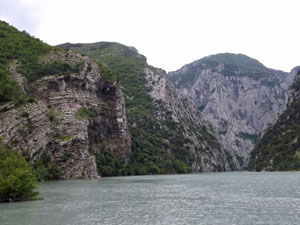 Steep walls and twisted strata |
|
|
||
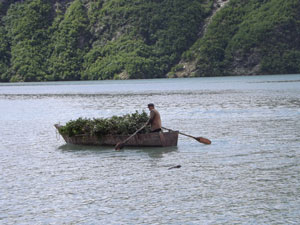 Local transport on Lake Koman |
 A small farm on the lake shore |
|
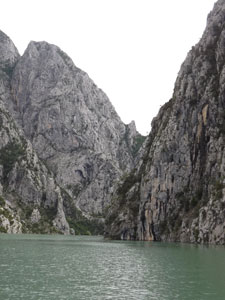 |
Some sections of the gorge were sheer-walled and rugged, while others (below) were more serene where still green waters reflected the forest-clad slopes |
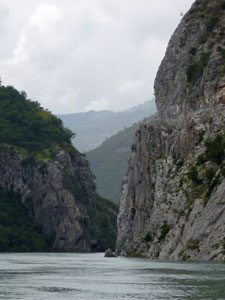 |
|
|
|
|
|
|
|
|
|
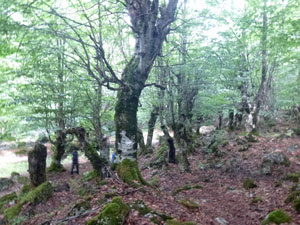 The forest of the Valbona Valley |
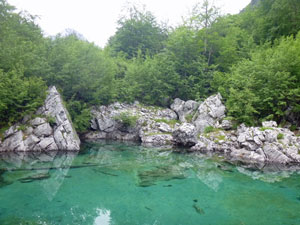 The clear green waters of Lake Xhemes |
|
|
        |
Day 1 - Rruga e Puntorve - the Workers' Trail (8 km - 940km ascent - 940 km descent) |
|
||
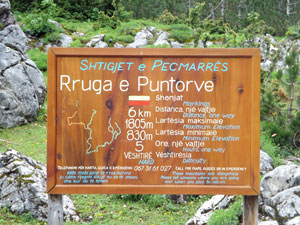 Rruga e Puntorve - The Workers Trail |
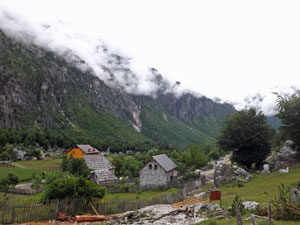 Leaving the hamlet of Dunishe |
 Passing through the valley forest |
|
|
|||
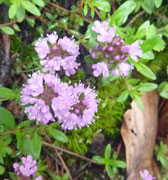 |
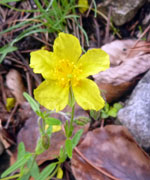 |
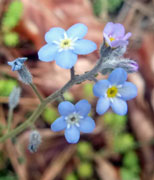 |
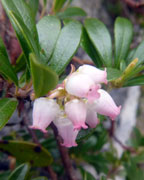 |
|
|
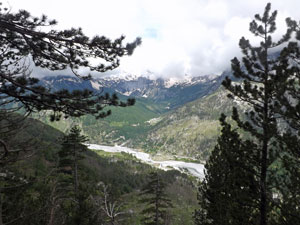 Looking back down to the Valbona River |
|
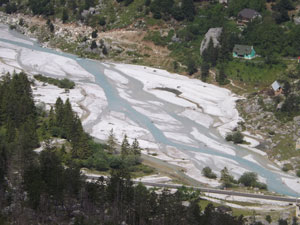 The braided course of the Valbona River |
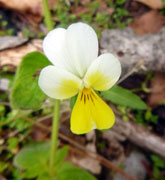 |
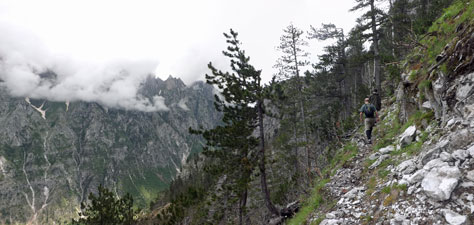 Steep traverse across the slopes of Pecmares |
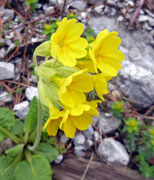 |
|
|
|
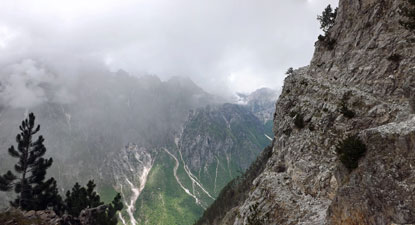 The vertical landscapes of Northern Albania |
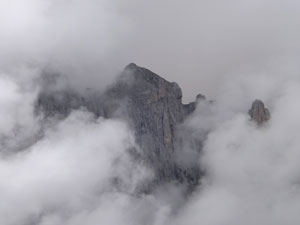 The peaks across the valley in swirling cloud |
|
|
||
|
A series of short and sharp zig-zags next to a steep snow-drift and a couple of longer exposed sections brought us to a spot below the rocky peaks of Pecmares. We had climbed almost 1000m and it was a point were we could look past the sheer rock walls of the mountains down to the Valbona Valley or across the valley to watch the mists drift by the craggy peaks of Kollates opposite. A magnificent place and a good spot to have lunch and take in the grandeur of the Albanian mountains.
|
|
|
||||
 |
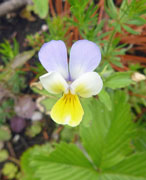 |
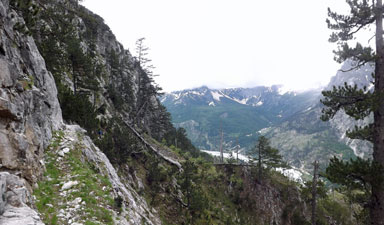 Scattered pines on the steep slopes of Pecmares |
 |
 |
|
|
|
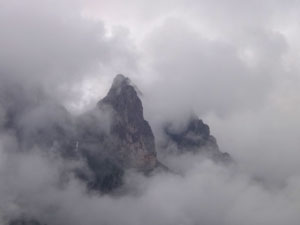 The clouds swirl about Kollates |
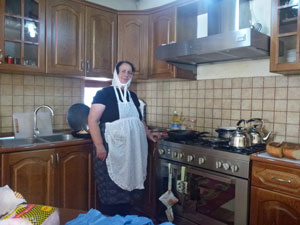 Our hostess at Dunishe |
|
|
        |
Day 2 - Kukaj and beyond (14 km - 970m ascent - 740m descent) |
|
|
|
||
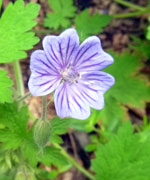 |
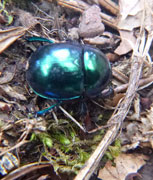 |
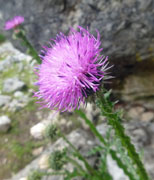 |
||
|
||||
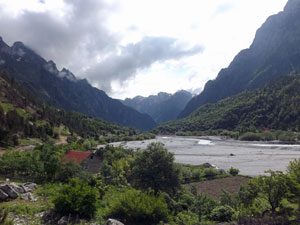 View eastwards down the Valbona Valley
|
|
|
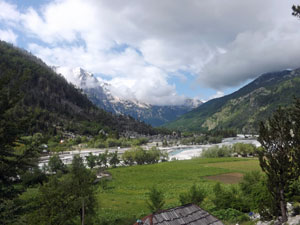 View westwards towards the Upper Valbona Valley
|
|
|||
|
|
|
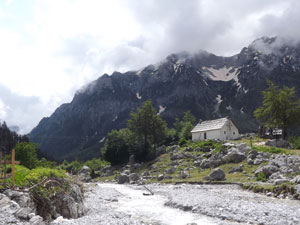 Isolated farmhouse in Kukaj |
 Some mountain sheep |
|
|
We left the village to continue the climb, following the track further upstream, past a flock of sheep being shepherded by two young boys, and then headed into the forest. After filling our water bottles, we turned way from the stream to head up a white limestone scree slope, before crossing several deep erosion gullies. Here avalanches had ripped down trees and carved big gashes as they thundered down the slope last winter, dragging tonnes of loose limestone rocks and boulders with them. It was impressive to see the force they can generate.
Crossing the deep remnants of one of the avalanches, we started the climb in earnest, heading steeply up beyond the trees to a flower-speckled meadow above. Out to our left a new peak appeared - the domed top of Jezerces, at 2692m, the highest peak in northern Albania. Its dome was covered in the pure-white of freshly fallen snow, a vivid contrast to the pinkish-tan tint of the old snow in the lower foreground mountains. The pattern of old and new snow and the clouds drifting around their peaks made this cirque of mountains an impressive vista.
We pushed on - the track zig-zagging its way up these steep grasslands, passing through the occasional grove of trees as it followed a narrow spur up towards the bare-faced mountain tops. |
|
|
|||
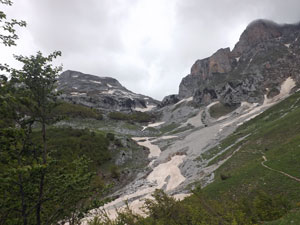 The pass into Montenegro |
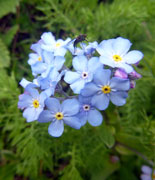 |
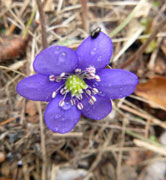 |
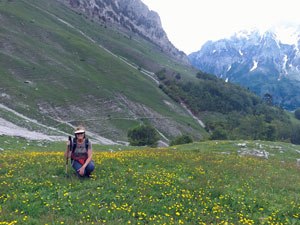 In the flower-speckled alpine meadow |
|
|||||
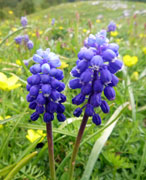 |
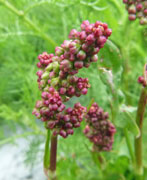 |
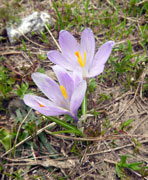 |
 |
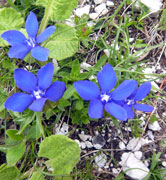 |
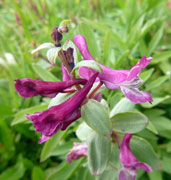 |
|
||
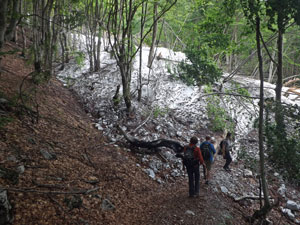 Crossing the remnants of a big avalanche Crossing the remnants of a big avalanche |
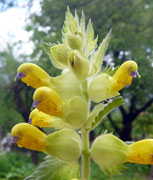 |
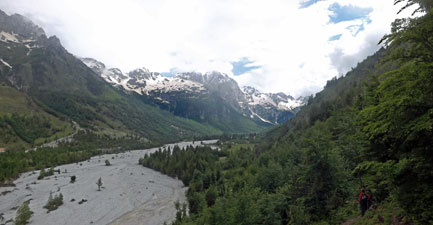 Looking up the Valbona Valley towards the hamlet of Rrogam |
|
||
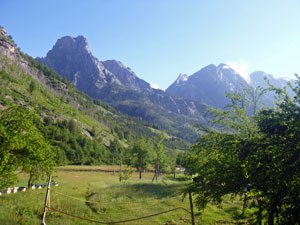 Ismet Sali Brucaj (2527m) in the afternoon sun |
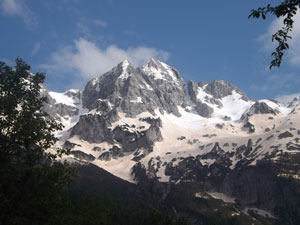 The superb rocky pinnacle of Zaphores (2398m) |
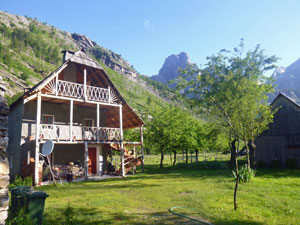 Our guesthouse in Rrogam (Hani Kol Gjorni) |
|
||
Day 3 - Upper Valbona Valley and Rragami Waterfall (16 km - 410m ascent - 410m descent) |
|
|
|
|
|
|
|
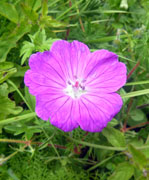 |
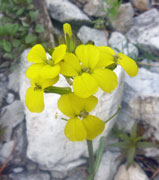 |
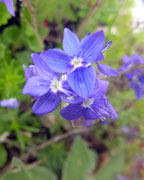 |
 |
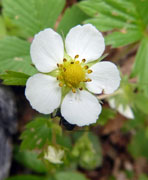 |
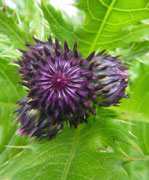 |
|
||||
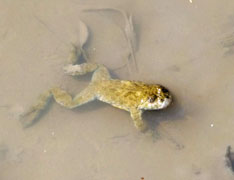 |
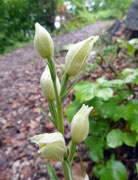 |
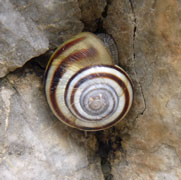 |
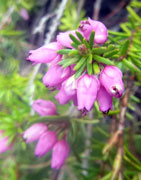 |
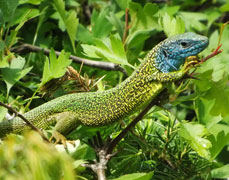 |
|
|
|
|
|
||
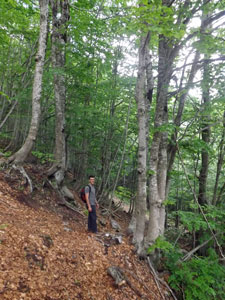 Bledar in the forest |
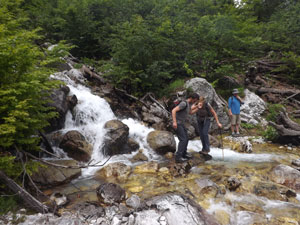 Stream-crossing on the way to the falls |
||
|
|
|
|
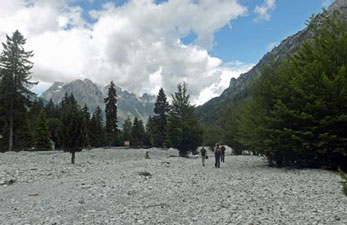 Return to Rrogam along the gravel river bed |
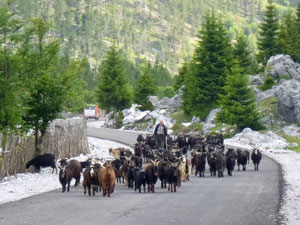 The goats come home |
|
|
|||
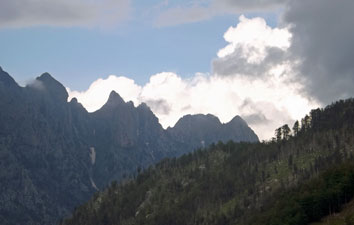 Evening silhouette of the Albanian Alps |
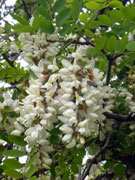 |
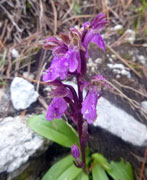 |
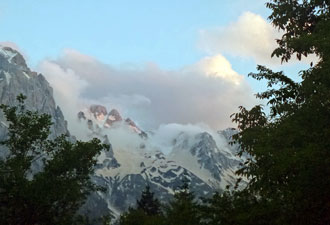 A mantle of cloud descending on the snow-clad summits |
|
|
|
|